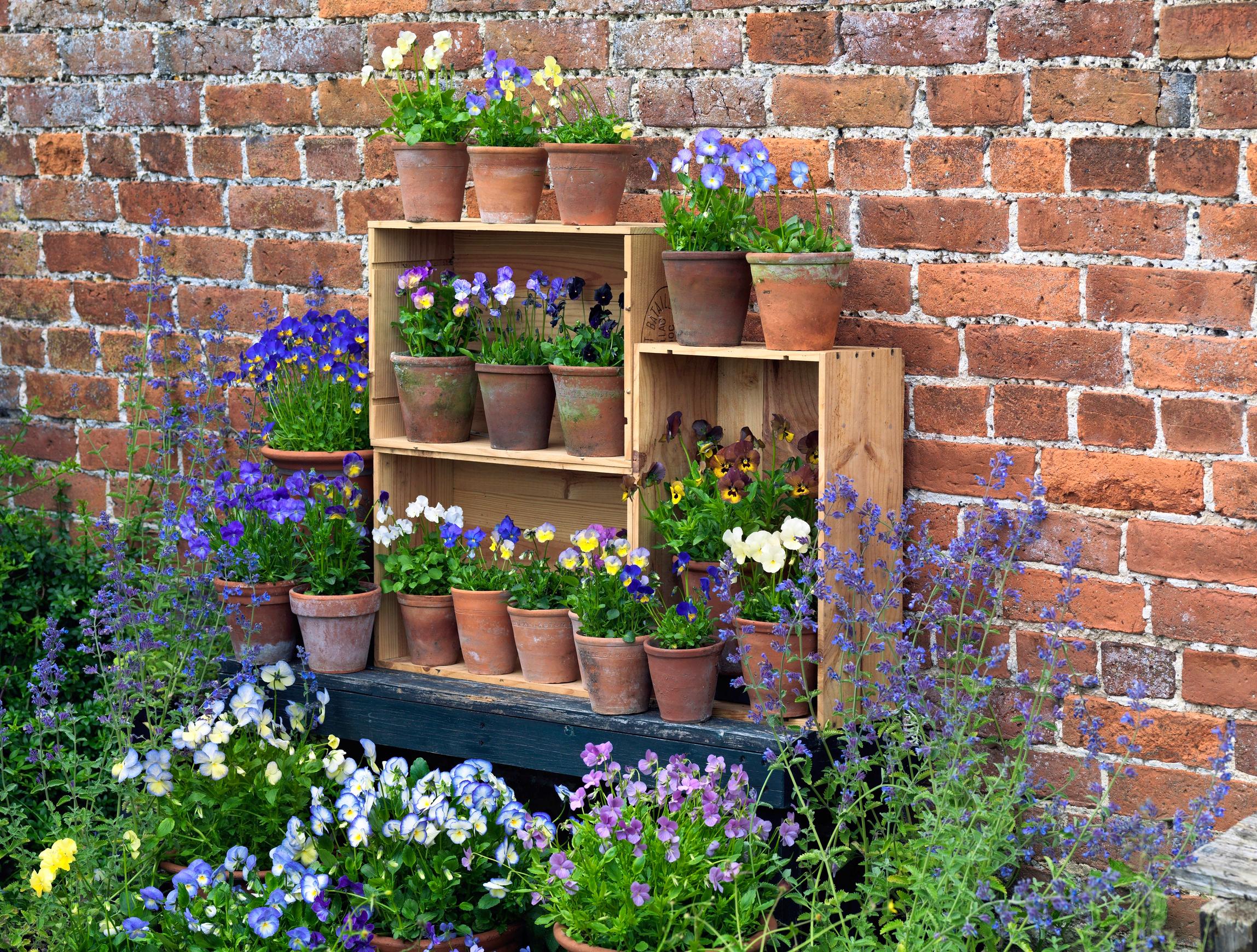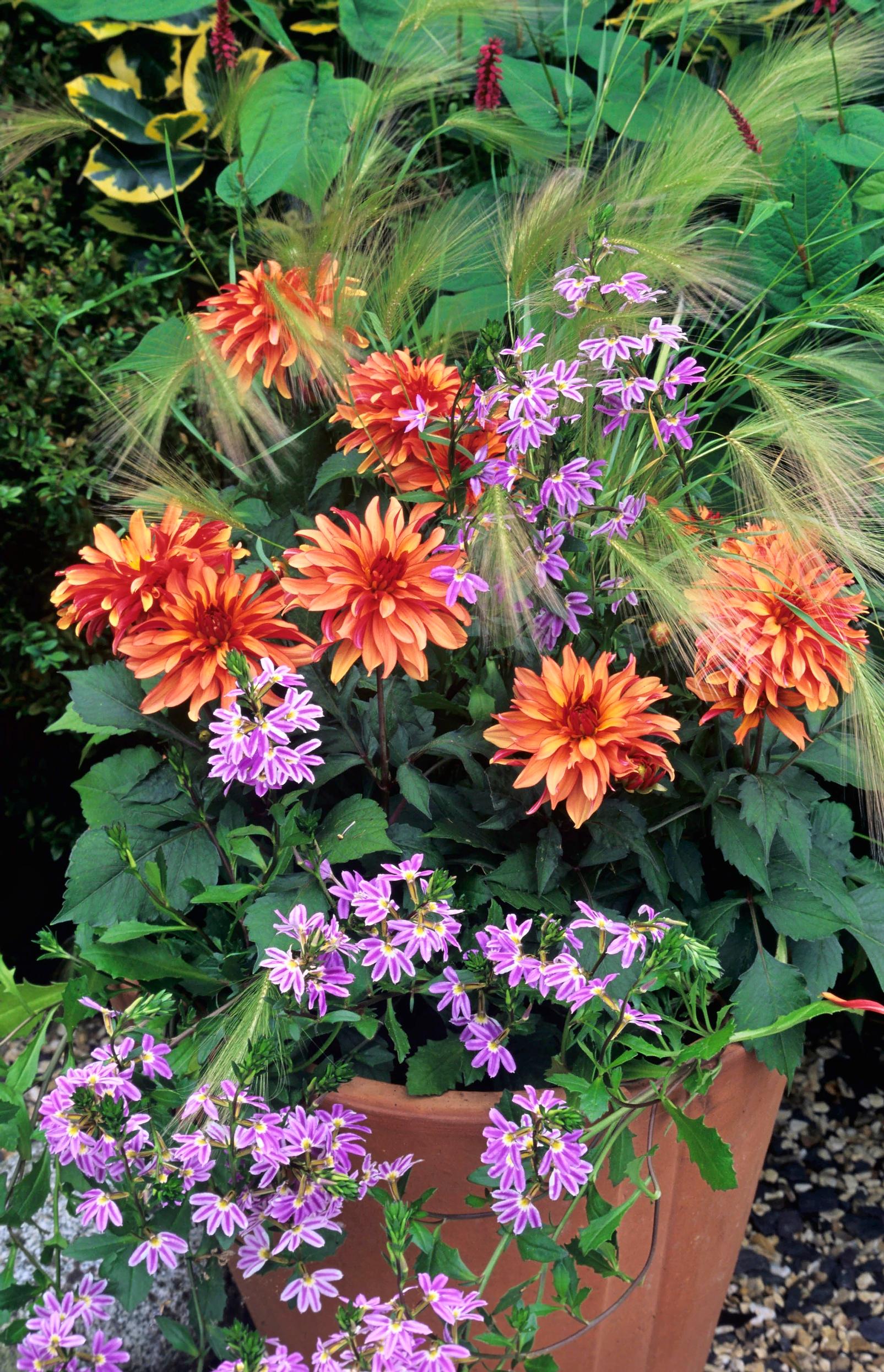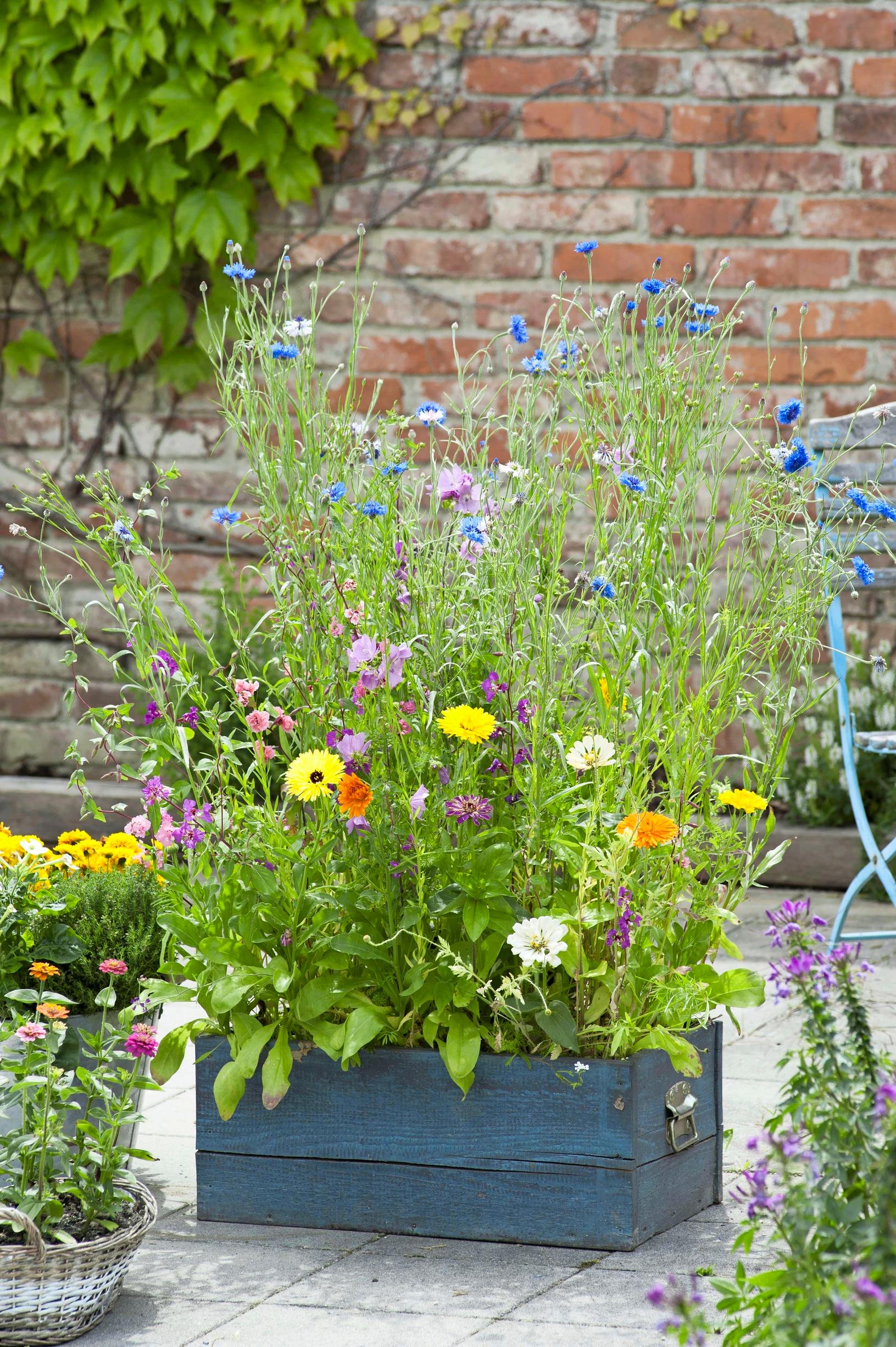
Summer flower arrangements—three ways to combine varieties!
Solo, trio, or a full orchestra? Creating summer flower arrangements is an adventure! We’ve gathered tips for how to arrange flowers in an impressive single-species display, a three-variety trio, and a lush multi-species arrangement.
A single-species solo is striking in its simplicity: an easy summer flower arrangement
If you have a favorite summer flower, create a showstopping solo arrangement with just that one species. Most summer flowers stay beautiful throughout the growing season. If your favorite has a shorter prime, simply switch it out for another solo star as summer progresses. Enjoy long-lasting summer blooms with this simple approach.
Here’s how to create a solo arrangement:
- Start by choosing your containers. When you’re working with just one species, focus on the pots. Experiment with materials, sizes, and shapes. Don’t hesitate to get creative and repurpose old pots, jars, or pans. Just make sure there’s a drainage hole in the bottom.
- Plant the seedlings in the containers, 1–5 plants in each, depending on the container size and the species.
- Group your containers where you want them. If they’re all the same height, introduce variation by placing one container on, for example, an upside-down pot.


A central plant, filler plant, and border plant complete each other perfectly. Check out the end of this article for suggestions on which species suit each role.
A trio brings together three distinct growth habits for summer flower arrangements
Combining three different growth forms is a classic way to arrange plants in outdoor summer container gardens. This trio is often called thriller, filler, and spiller—a central plant, filler plant, and border plant.
Here’s how to create a trio arrangement:
- Choose a central plant that clearly stands out from the others. It could be larger, have a sculptural shape, or feature foliage in a unique color. Plant it in the center or at the back of the arrangement in respect of the viewing angle.
- For fillers, choose plants that provide lush coverage. Repeat the central plant’s color in different shades and intensities or create contrast with complementary colors—for example, add a splash of yellow amidst purple.
- Finish the arrangement with trailing plants around the edges. Depending on the container’s height and location, opt for softly cascading or relaxedly hanging species.


A multi-species orchestra enchants with its abundance
If you want maximum lushness and color, a multi-species combination is the way to go. The bigger the container, the more floral delight it can hold. Make sure the plants all thrive in similar conditions.
Here’s how to create a multi-species summer flower arrangement:
- Start by deciding on your color palette. Pick a main color scheme, such as red hues or a white-and-green look, and add smaller amounts of accent colors if you like.
- Choose species and varieties that fit your color palette, making sure the arrangement is visually interesting by selecting plants with different growth and leaf forms. Make use of grasses and foliage-focused plants like hostas or coral bells.
- Arrange the plants in the container so the overall composition feels balanced. Plant, then enjoy!


Tall central plants for summer flower arrangements
- flowering tobacco (full sun to partial shade)
- spider flower (full sun)
- castor bean plant (full sun to partial shade)
- summer cypress (partial shade to shade)
- canna lily (full sun to partial shade)
- purpletop vervain (full sun)
- species grown with a trunk-like stem, such as fuchsia, marguerite, blue potato bush, and tall dahlia varieties
Climbing vines suited as central plants with a support
- sweet pea (full sun to partial shade)
- asarina (full sun to partial shade)
- black-eyed Susan vine (full sun to partial shade)
- cup-and-saucer vine (full sun to partial shade)
- purple bell vine (full sun to partial shade)
- Spanish flag vines (full sun to partial shade)
- hyacinth bean (full sun)
Lush filler plants
- Swan River daisy (full sun to partial shade)
- licorice plant (partial shade to shade)
- marguerites (full sun)
- twin spur (full sun to partial shade)
- impatiens (partial shade to shade)
- snow-on-the-mountain (full sun to partial shade)
- flowering tobacco (full sun)
- petunias (full sun to partial shade)
- fan flower (full sun to partial shade)
- garden verbena (full sun to partial shade)
Cascading spiller plants
- silver nickel vine (full sun to partial shade)
- variegated ground ivy (partial shade to shade)
- yerba buena (full sun to partial shade)
- Cape ivy (partial shade to shade)
If you’re seeking more insight on how to arrange summer flowers, these suggestions can guide you in creating easy summer flower arrangements that last all season long.


